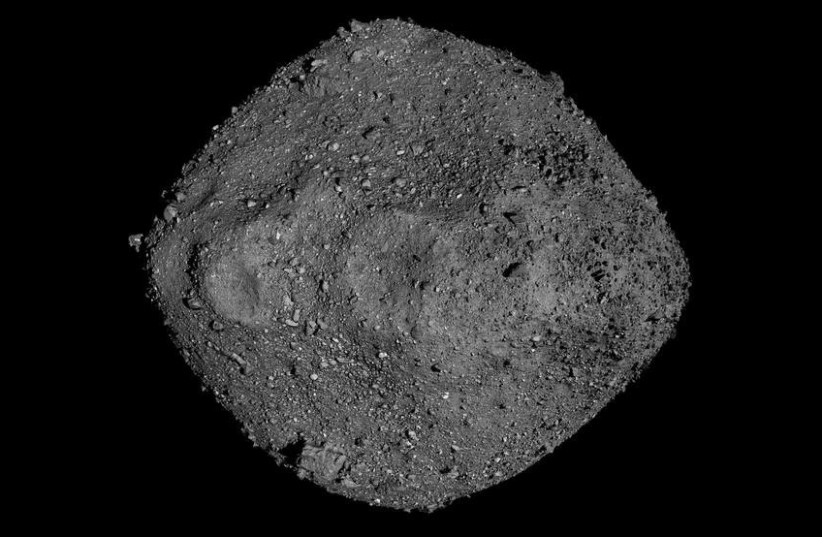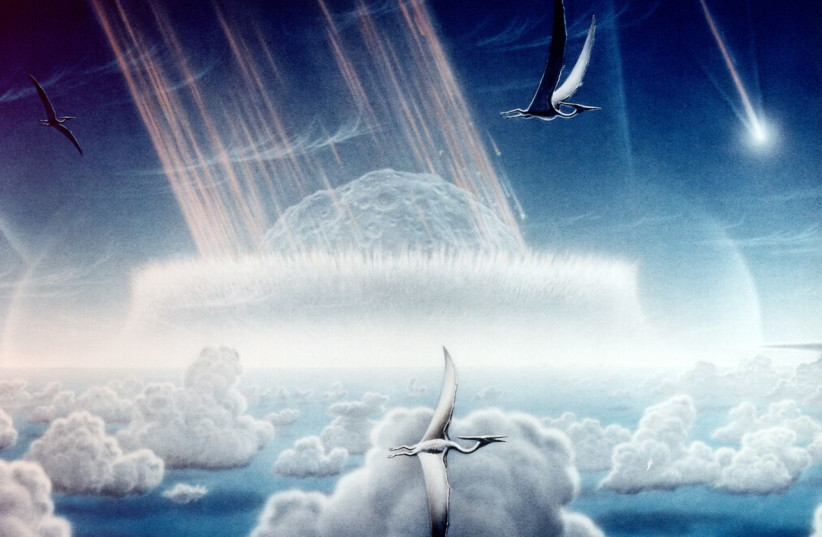The dinosaurs are widely thought to have gone extinct due to a single asteroid impact, but the giant asteroid that put an end to the reptilian megafauna may not have come to the Earth alone, according to a recent study.
The findings of the study, published in the peer-reviewed academic journal Science Advances, indicate that a large asteroid may have impacted the Earth some 66 million years ago in what is now the northern Atlantic.
Because the impact happened at around the same time as the Chicxulub impact, which is believed to have been the asteroid that killed the dinosaurs, it may have been part of a cluster of asteroid impacts or by the breakup of a single asteroid.
A new asteroid impact crater has been discovered
Scientists recently discovered what may be a new asteroid impact crater in the Atlantic Ocean. The discovery itself was actually accidental when geologist Uisdean Nicholson noticed it by chance when studying seismic data in the area as part of a wholly unrelated study on continental drift.
At the time, there were already signs and evidence that it was formed by an asteroid impact.

The over eight-kilometer crater itself has been named the Nadir crater and is located some 400 kilometers off the West African coast.
Now, this discovery was already significant in its own right, as if it indeed is an asteroid impact crater, then it would be just one of under 20 confirmed impact craters underwater.
But what's even more interesting about this is the impact itself.
The researchers behind the study, led by crater formation expert Veronica Bray of the University of Arizona Lunar and Planetary Laboratory, used computer simulations to try and identify just what kind of asteroid impact could have formed the crater.
Their conclusion was that it was most likely an asteroid impact, specifically by an asteroid that was around 400 meters wide.
This is comparable to the asteroid Bennu, currently considered one of the most dangerous asteroids to Earth.
According to the study, this impact would have been extremely powerful, resulting in earthquakes greater than a magnitude of 6.5 and could have formed tsunamis over 900 meters high.
For comparison, the 2022 Hunga Tonga-Hunga Ha’apai volcano eruption in Tonga was the most powerful volcanic eruption since the eruption of Krakatoa in 1883. But this asteroid impact would have been 1,000 times stronger.
This asteroid impact would have been absolutely devastating. But it would have been minuscule compared to the Chicxulub asteroid impact that killed the dinosaurs.

Background: What killed the dinosaurs?
The dinosaurs ruled over the Earth for millions of years. However, this era ended in what is widely believed by scientists to have been a massive and apocalyptic asteroid impact.
This extinction event took place in what has become known as the Cretaceous-Paleogene boundary, as it separated the two eras in Earth's history.
The catastrophic collision not only wiped out the dinosaurs, but 75% of all life on Earth and may have helped create rain forests.
The exact details surrounding the asteroid in question have been fleshed out by scientists over the years.
Scientists pinpointed exactly where this asteroid hit to the Chicxulub asteroid impact crater in Mexico's Yucatan Peninsula. They also heavily narrowed down when it would have happened, which would have been sometime during the spring.
<br>How dangerous is an asteroid impact?
An asteroid impact is one of the most dangerous possible natural disasters that could occur.
According to research from the Davidson Institute of Science, the educational arm of Israel's Weizmann Institute of Science, an asteroid over 140 meters in diameter would release an amount of energy at least a thousand times greater than that released by the first atomic bomb if it impacted Earth.
Something even larger – over 300 meters wide like the Apophis asteroid – could destroy an entire continent. An asteroid over a kilometer wide could trigger a worldwide cataclysm.
But the Chicxulub asteroid impact was something far beyond any of that.
The asteroid that killed the dinosaurs was estimated to be around 10-15 kilometers wide and its impact resulted in the creation of a crater 180 kilometers wide and 20 kilometers deep.
This is one of the single largest confirmed asteroid impact craters anywhere on Earth, possibly dwarfed only by the 300-kilometer-wide Vredefort impact crater in South Africa, and is one of the largest and most devastating asteroid impacts to ever happen on the Earth.
Other asteroid impacts have happened on Earth before. Some were devastating impacts, such as the Tunguska event in 1908, while others caused no damage, like when 2022 EB5 crashed into the Earth earlier in 2022. But the Chicxulub asteroid impact that killed the dinosaurs was thought to be an isolated and significant event. A lone asteroid that caused an extinction event.
Or so we thought.

Asteroid siblings or swarms?
The Nadir impact's close proximity to the Chicxulub asteroid impact that killed the dinosaurs is notable.
The researchers were able to link the Nadir and Chicxulub impact craters because seismic data indicated the sedimentary layer the asteroid hit likely dates to the Cretaceous-Paleogene boundary.
This isn't absolutely confirmed. Studying asteroid impact craters underwater is very difficult and a number of other issues mean that the window of time when this impact could have taken place isn't exact.
But if these preliminary studies are accurate, it presents some interesting possibilities.
Specifically, the study lists four possible reasons for this to have happened.
- The Nadir asteroid and Chicxulub asteroid were two asteroids in a binary asteroid system that both struck the Earth.
- There was originally just one asteroid and the Nadir and Chicxulub asteroids broke off from each other.
- The two asteroids may have been part of a larger swarm or cluster of asteroid impacts.
- The two are just entirely unrelated and this is all a coincidence.
Regarding the first option, there may be some precedence, as these binary asteroid dual impacts have been proposed as having happened before, though most of these have been disputed and none have been conclusively proven.
Regarding the second option, this seems a bit tricky at first glance. Asteroids often break apart upon hitting Earth's atmosphere, and this could in theory cause impacts to happen in two distant places.
While today, the Chicxulub and Nadir craters are far apart, they were much closer 66 million years ago. However, they were still too far for them to have been part of one asteroid that broke up in the atmosphere.
But it is theoretically possible if the asteroid broke up earlier while in orbit. In fact, something like this has already happened before, albeit on Jupiter with the Shoemaker-Levy 9 comet in 1994.
Other impacts on Earth have also been thought to have been through something like this, too.
Regarding the third option, this hinges on if the dates of the Nadir and Chicxulub impacts were close but not precisely the same. If that is the case, then they may not have been from the same asteroid, but rather were part of a cluster of impacts. And if that's the case, it could mean the Cretaceous-Paleogene boundary was not formed by just the Chicxulub impact, but rather by a long series of asteroid impacts in a comparatively short period of time.
This hinges on the age of the Nadir crater, as it could be compared to some other impacts that happened that would become in a relatively close enough range of time to qualify as an impact cluster, with the Boltysh impact crater in Ukraine being one such example.
But overall, more research needs to be done to better figure this out. But luckily, that research is set to begin, as Nicholson has already applied for funding to drill down to study it.
